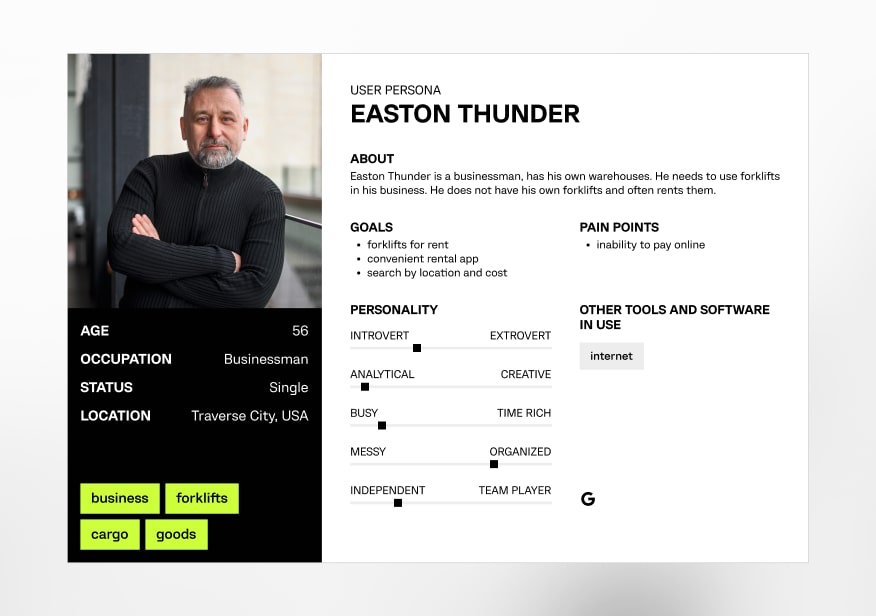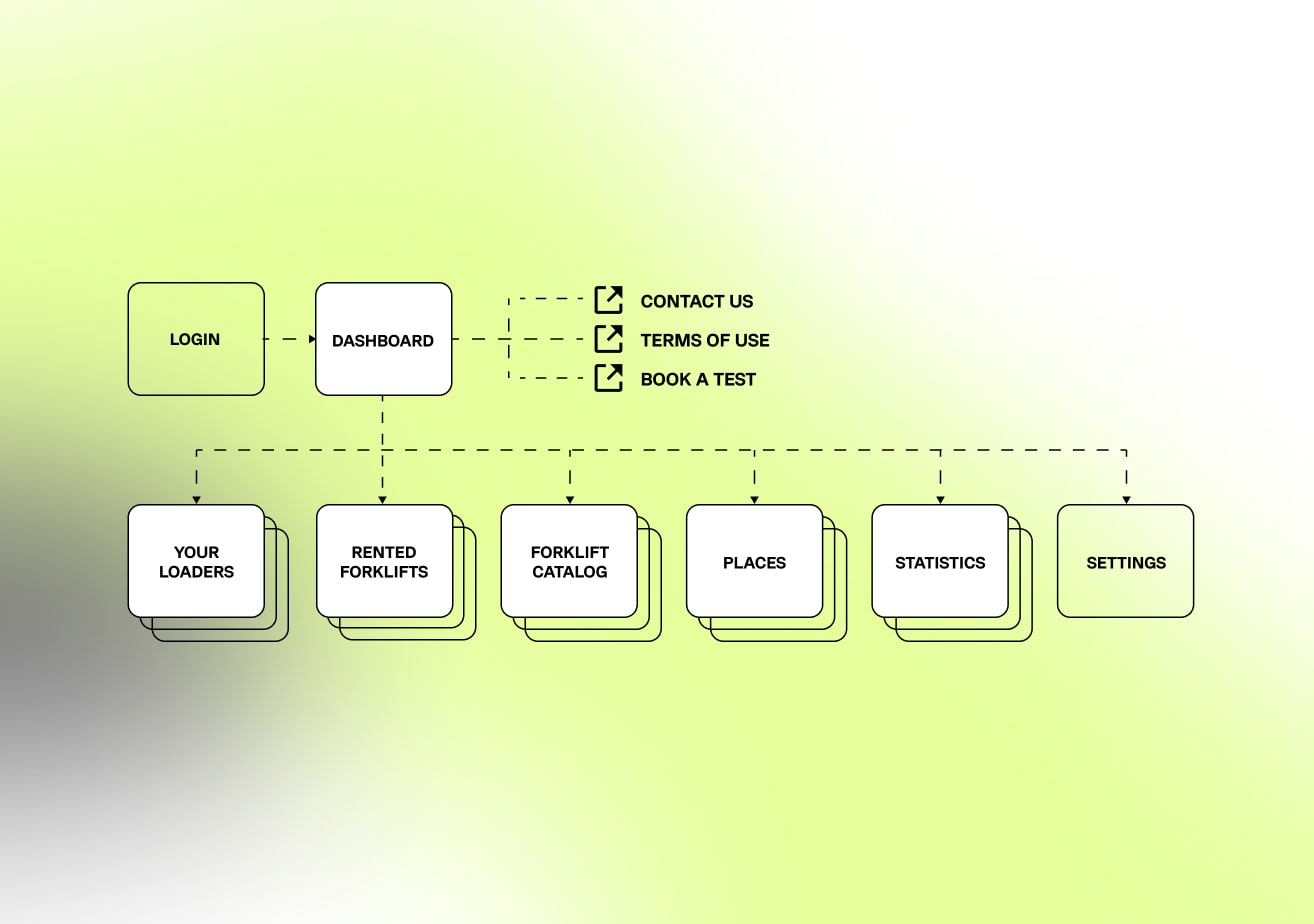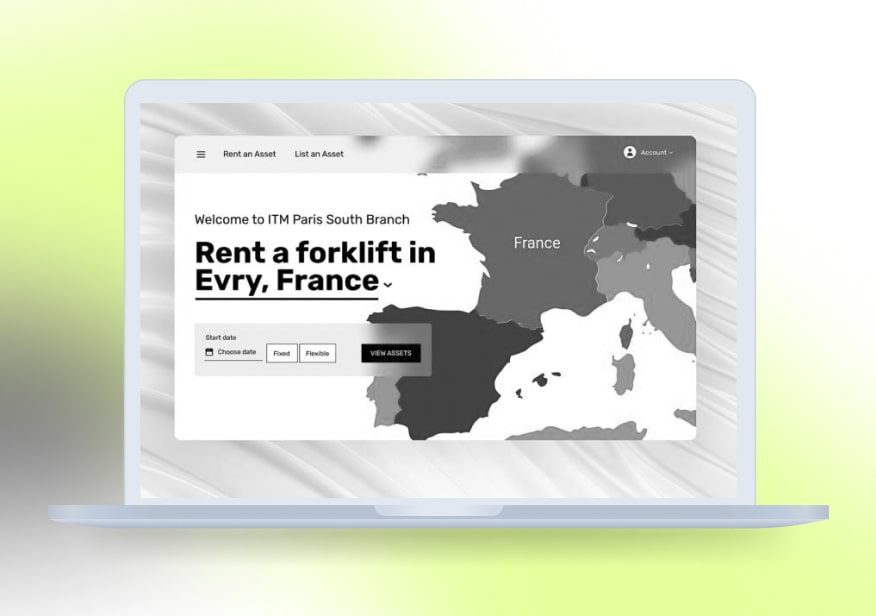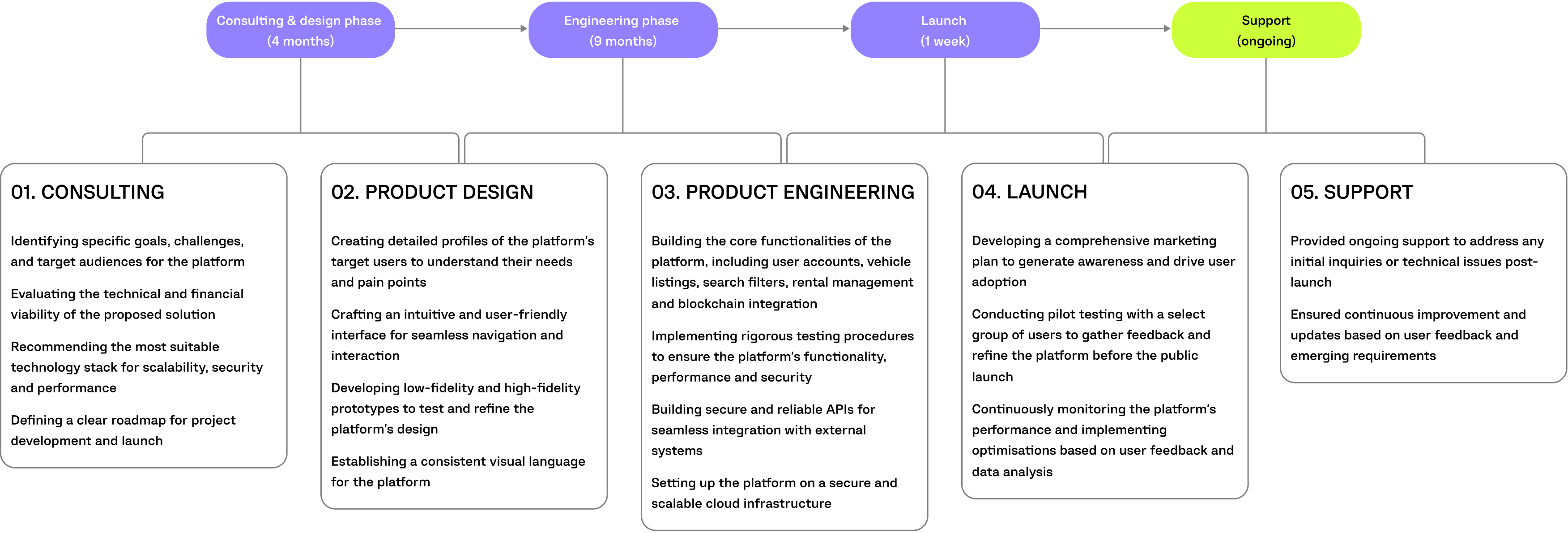Our client needed a secure and user-friendly platform for renting truck and trailer equipment. Our team helped develop a blockchain-based web platform that ensured secure and transparent transactions. Computools assisted in creating an intuitive interface and integrating advanced technologies, resulting in improved fleet management and increased revenue for the client.
The client is a global giant in the material handling industry, boasting a vast portfolio of forklift trucks, warehouse equipment and automated solutions. Their solutions optimise operations in factories, warehouses and distribution centres, ensuring smooth material and information flow.
They’re at the forefront of technological advancement, offering a comprehensive range of electric, fuel cell and conventional forklift trucks alongside driver assistance systems, fleet management software and automation solutions.
With leading positions in the EMEA region (forklift sales) and China (foreign manufacturer), they demonstrate their ability to adapt and thrive in diverse markets. This vast global reach allows them to cater to various customer needs and opportunities.
The client wanted a service that would facilitate the exchange of machinery equipment among their customers. They expected a user-friendly, reliable platform that would enable clients to locate and rent forklifts quickly and effortlessly.
We prioritised rapid development and user feedback, which focused on core functionalities and incorporated blockchain technology to ensure data integrity.
The streamlined user experience centred around user accounts, product search, cart management, contract handling and vehicle checkout/check-in processes. Truck history, reporting tools and user behaviour analytics provided valuable insights for platform optimisation. Leveraging blockchain, user identities, truck data (including photos and maintenance records), and contracts were secured and tamper-proof. Additional features included customer information, FAQs, expert support, and multilanguage capabilities to enhance user experience and platform accessibility.
We successfully developed a platform in a short time span. As a result, the product has made it easier for customers to onboard and share assets, find a truck and send the rental request. From a business perspective, this online marketplace improved the company’s flexibility in managing fleet capacity and boosted revenue.
When EQUIPSHARE began its search for a strategic partner to develop its web platform, it considered several qualified developers, seeking a team with deep industry expertise and a proven track record. Ultimately, they chose Computools due to our advanced expertise in disruptive technologies, industry-focused solutions, and commitment to transparency and long-term partnerships. From the outset, Computools prioritised understanding EQUIPSHARE’s specific needs, establishing clear communication channels and aligning project goals with their business objectives. This collaborative approach fostered trust and confidence in the early days of our partnership. Computools’ dedication to innovation, as recognised by the IMProve Academy, and our ISO 27001:2013 certification for information security further assured EQUIPSHARE of our capability to deliver a secure, scalable, and reliable platform.
EQUIPSHARE needed an efficient and secure platform to facilitate machinery equipment exchange among their customers. They faced the challenge of ensuring a seamless, reliable, and transparent rental process for expensive equipment, such as forklifts while managing usage history and transactions securely.
They considered several qualified developers but ultimately chose Computools due to our deep industry expertise, advanced technological capabilities, and commitment to transparency and long-term partnership. The decision was influenced by our proven track record in logistics, disruptive technologies, and comprehensive understanding of the marketplace dynamics. Key features like blockchain integration for secure transactions and an intuitive user interface set us apart from competitors.
We led the design and development phases, integrating blockchain technology to ensure secure and transparent transactions. Our team also emphasised creating an intuitive user interface, setting up a scalable cloud infrastructure, and ensuring compliance with GDPR to protect user data. We handled the entire lifecycle from concept to deployment, providing expertise in backend development with Golang, containerisation with Docker and Kubernetes, and frontend development with React.
We identified inefficiencies in the initial design and proposed changes to streamline user onboarding and rental management processes. We customised algorithms to enhance search filters and rental tracking, ensuring a seamless user experience. Additionally, our analysis of user behaviour informed the development of features tailored to client needs, such as detailed truck history and reporting tools.
After the platform’s successful development and launch, Computools facilitated a smooth transfer of ownership and responsibility to EQUIPSHARE. We handed over the codebase on the client’s preferred Git platform and provided comprehensive documentation for future maintenance and updates. Post-launch, we offered additional support to address initial inquiries and technical issues, ensuring continuous improvement and client satisfaction.
This MVP laid the foundation for EQUIPSHARE to refine its offering based on user data and feedback, paving the way for a robust and scalable platform.
In this case, design tasks included creating an intuitive user interface, developing detailed user personas, building an effective site structure for optimal navigation and crafting low-fidelity and high-fidelity prototypes for testing and refining the platform's functionality.

Creating in-depth profiles to empathise with users, tailoring the platform to their needs

Organising strategically for optimal navigation and user engagement

Prototyping precision for testing and refining design functionality

Designing a visually appealing interface for a seamless and enjoyable user experience
Hyperledger
Selected for its suitability to EQUIPSHARE's business needs, Hyperledger supports secure and transparent rental transactions through its blockchain-based framework. Its modular architecture enables flexible component usage and leverages container technology to execute smart contracts, ensuring reliable and tamper-proof transaction records.
Golang
Chosen for the backend due to its compatibility with Hyperledger, Golang offers high performance and a straightforward syntax that accelerates application development. Its ease of use and readability are advantageous for team collaboration and code maintenance.
Docker
Docker was utilised to develop, test, deliver, and run the application within containerised environments. This open-source tool optimizes system resource usage, enables quick application deployment, and ensures scalability and stability across different environments.
Kubernetes
Implemented for Docker container management and scalability, Kubernetes is an open-source platform that handles containerised workloads and services. It allows declarative customisation and automation, which are essential for maintaining the platform’s performance and scalability as user demand increases.
React
React was used for front-end development because it built fast, scalable web applications efficiently. It allows developers to work on individual application parts on both the client and server sides, speeding up the development process. React's modularity makes it easy to maintain and adaptable, providing significant time and cost savings.
The Scrum approach was the optimal option for us and the client. Sprint started on Wednesday, and meet-ups and other team-wide activities were coordinated with the client’s time zone. Demo and retro happened on the last day of the sprint. The team had a retrospective, sprint planning, and task grooming after each two-week sprint.


“Computools was selected through an RFP process. They were shortlisted and selected from between 5 other suppliers. Computools has worked thoroughly and timely to solve all security issues and launch as agreed. Their expertise is impressive.”